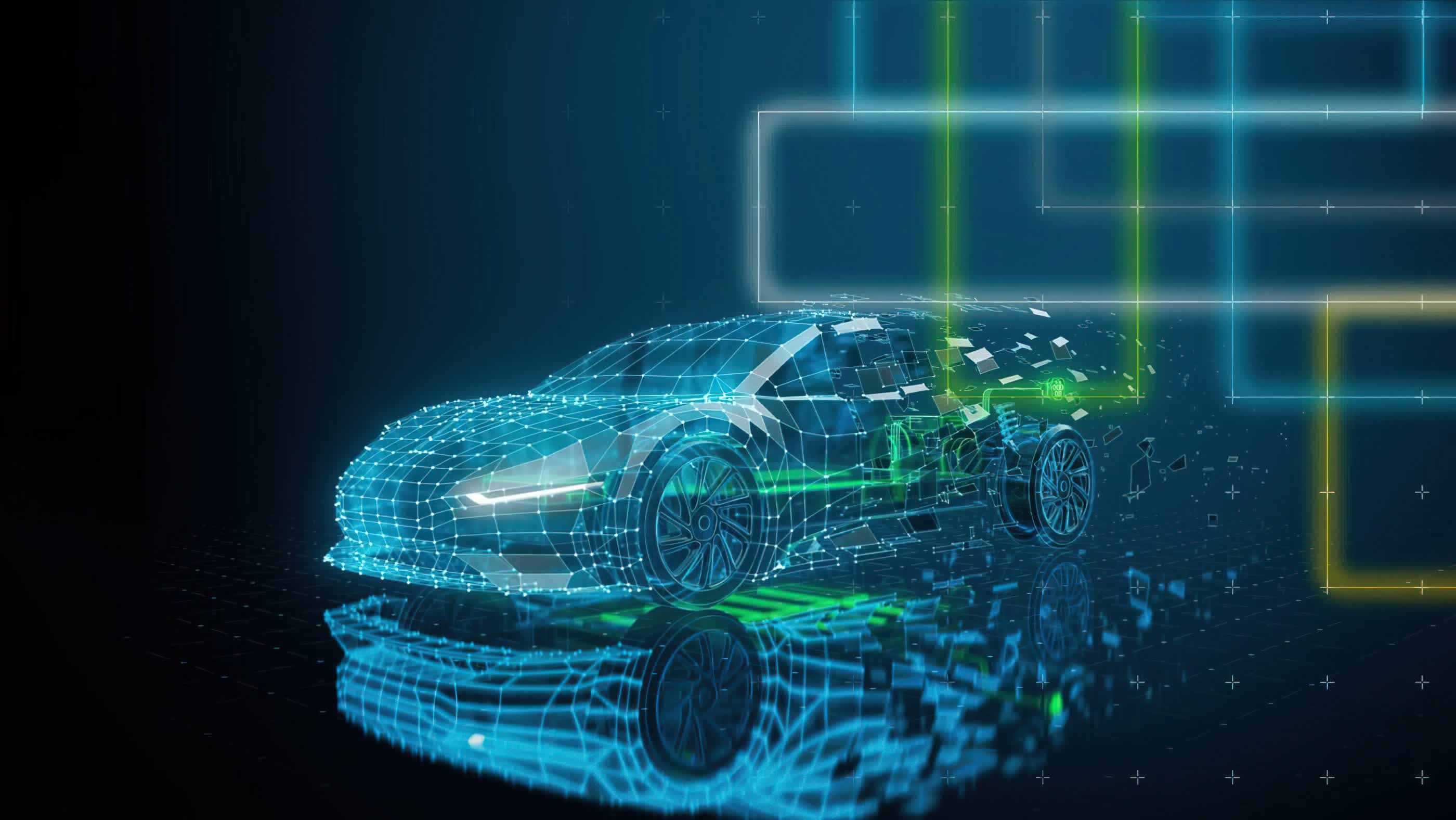Something to look forward to: One of the largest and most important changes happening to the automotive business is the move to the idea of a software-defined vehicle (SDV). But as exciting as the shift may be, it's also proven to be very problematic. Because of the nature of how cars are designed and developed, there's typically multiple years that pass between the initial concept for a vehicle and the time it's completed.
As the automotive industry moves toward more "computerized" and software-driven vehicles, the development period has started to extend even longer. The reason? Because carmakers are having to wait for the completion of semiconductor chips, which are crucial to these new SDVs, only after these chips are ready can manufacturers start working on writing the millions of lines of software code required to operate them.
In practical terms, this means that by the time these modern cars are released, they may be relying on chip technology that is 3-5 years old.
In order to fix this, a paradigm shift in the automobile design process was necessary and that's exactly what Arm just unveiled this week, in conjunction with partners like Cadence, they are building and extending its 20-plus year run as a critical supplier to the car industry.
With its new virtual automotive platform, Arm is creating a "digital twin" of its automotive chip architectures that can run in the cloud as soon as the IP for these semiconductor designs are completed. The result is that carmakers and automotive suppliers can shave as much as two years off the development process.
By enabling the coding of software for these vehicles on digital twins significantly earlier than before, car manufacturers can accelerate the development process. Given the increasing competitiveness of the automotive market – particularly with the entry of numerous tech-focused companies – this faster development time is expected to significantly impact car brands and Tier 1 suppliers that choose to leverage it. Plus, it allows more advanced technologies to get into our cars at a faster pace.
The way that chipmakers who leverage Arm's architecture into their products (including companies such as Qualcomm, Nvidia, and Renesas among others) have typically created their own semiconductor designs is to take Arm's latest IP and then create their own custom designs from those shared architectures.
What Arm has done now is replicate these future designs in software and run them on their more advanced server-based Neoverse designs, such as AWS' Graviton chip. This gives carmakers the ability to write software and test it on software duplicates of their new automotive chip architectures well before the finished chips that will eventually go into cars are completed. This "shift left" concept makes it easier for software-defined vehicle designs to get started sooner.
Speaking of Neoverse, one of the other elements that Arm unveiled is a version of its more powerful Neoverse designs called the Neoverse V3AE that's been optimized for the redundancy and reliability requirements of the automotive market. These news designs meet the critical ASIL B and ASIL D vehicle standards. Because they enable the creation of server-class CPUs for cars, they offer the potential to create more capable assisted and autonomous driving features, too.
These chips are the first to support the Arm's V9 CPU architecture in the automotive market, adding several important security capabilities to the design. Arm also released their first V9-based Cortex A processor designs and the first 64-bit R series CPU, the R82AE which is designed for the real-time operations that cars require, including things like steering assist, automated braking, etc.
Looking ahead, Arm also announced that it will be expanding its Compute Subsystems features and will be offering complete system design capabilities for the automotive market in 2025.
What this means in real-world terms is that Arm licensees will be able to more easily and more quickly design complete automotive chiplet designs that integrate not only Arm CPU and other co-processor elements but things like a security island for hardened designs, additional connections to sensors and I/O devices, and more. Arm started this system design concept for the server market to speed up the process of creating complete SoCs, and they're now bringing it to automotive as well.
Another critical part of the chip design process are the EDA tools (Electronic Design Automation) that semiconductor designers use to create their own designs. In that light, Cadence simultaneously announced an agreement with Arm that will extend the capabilities of several of their tools to support these new designs.
The latest version of Cadence's Helium Virtual and Private Studio will let automotive manufacturers and their chip suppliers create chiplet designs that leverage Arm's digital twin architectures, with an initial focus on more ADAS applications. Cadence is also bringing some of its own IP targeted at IO and interconnect technologies like UCIe (Universal Chiplet Interconnect Express) to speed up chiplet design even further.
Just as chiplet-based semiconductor designs have become the modern standard for PCs, smartphones, and other devices, so too have they quickly become the expected standard for the automotive market.
Together, the combination of these Arm and Cadence technologies are expected to make the process of designing SDVs faster, easier and more efficient. In an era when car buyers are eager for the more advanced features that these kinds of vehicles can offer and car makers are scrambling to meet those needs, these developments represent an important and tangible step forward.
Bob O'Donnell is the founder and chief analyst of TECHnalysis Research, LLC a technology consulting firm that provides strategic consulting and market research services to the technology industry and professional financial community. You can follow him on X @bobodtech
